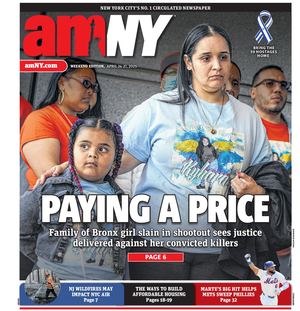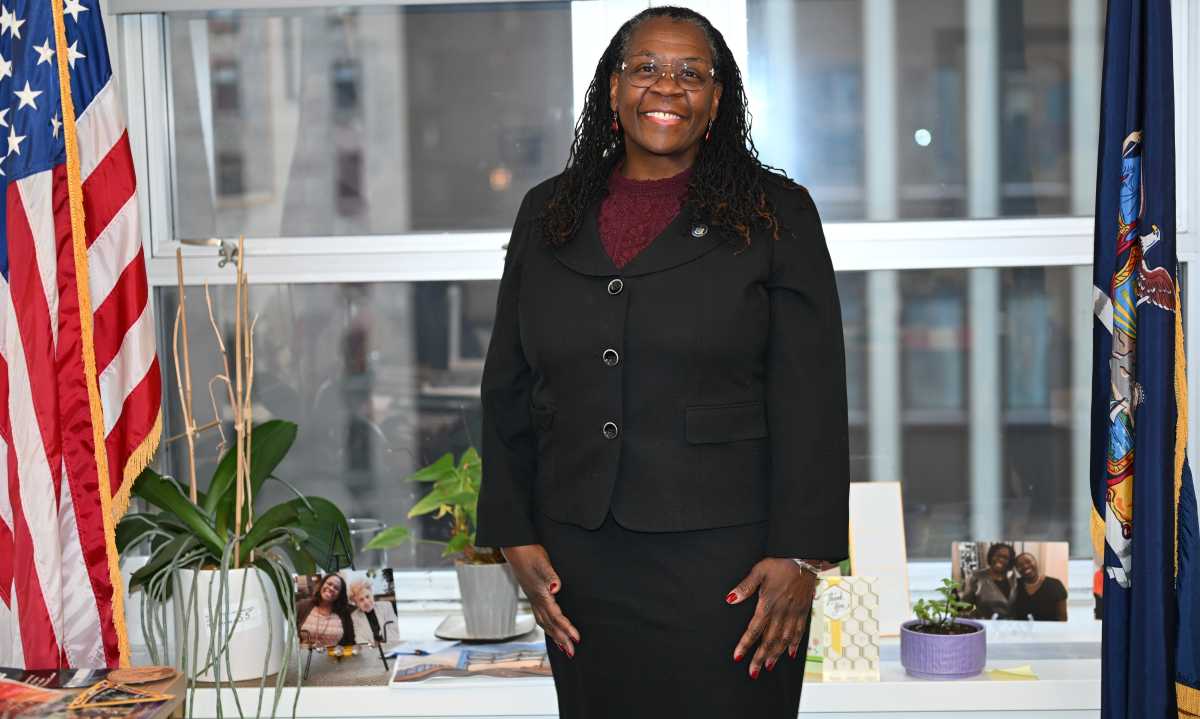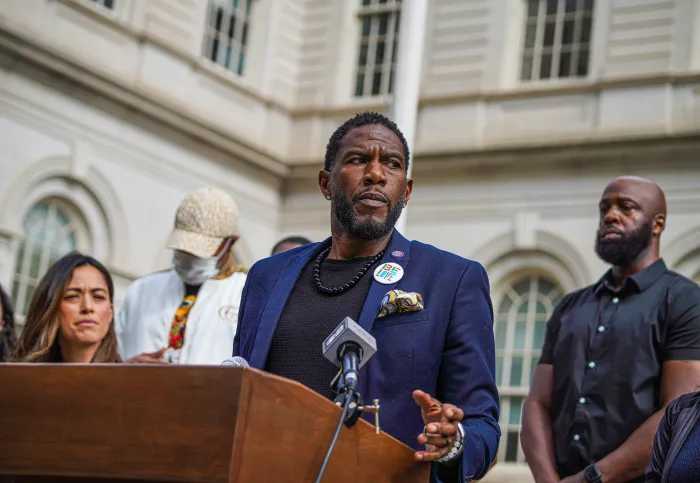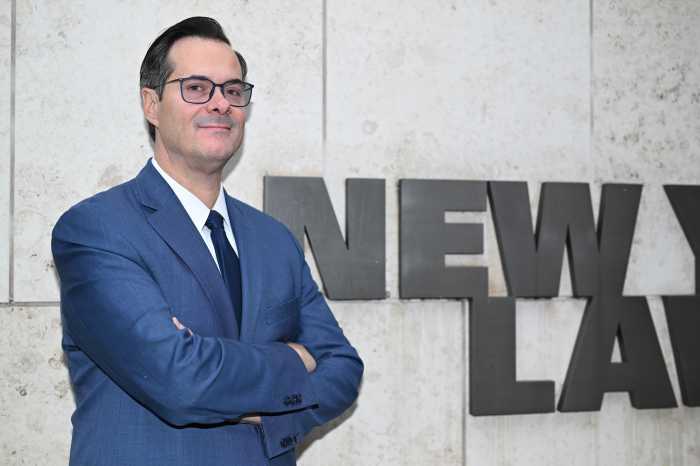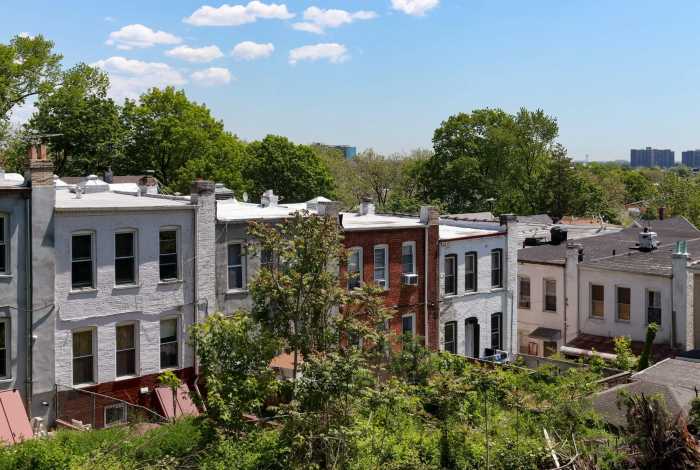In another lifetime, Deputy Chief Administrative Judge Edwina G. Richardson would be a happily practicing judge in family court where she would be working in one of the most intimate areas of the law.
But on a timeline where wave after wave of reforms have rippled through New York’s court system, Richardson has met the call of duty, helping to implement a new vision for the state courts centering on a therapeutic approach rather than a punitive one.
Richardson has led the New York State Unified Court System’s Office for Justice Initiatives (OJI), since 2017, overseeing a project to make the courts more hospitable for people of all incomes, background or ability.
Richardson’s perspective, which was shaped by her passion as a family court judge, and eventually in an administrative capacity, has proven a strong match for New York Chief Judge Rowan Wilson’s court administration’s mission in advancing a restorative approach to justice.
“We see things holistically. Even if it’s one human being who is accused of a crime, we know that one human being is connected to a family,” said Richardson. “And that even if it is a case that is before you, it is a human or more than one human with a complicated life and many legal issues of concern, not necessarily just the case that is appearing before you.”
As her expertise has become more widespread in the court system, so has the demand for her skills. During her tenure however, her role overseeing OJI has ballooned to encompass seven different functions, one of which has been flagged as a capstone of Wilson’s court administration.
Richardson’s restorative approach to law comes from a judicial career that started in family court listening to stories of pain, abuse and neglect, with the intention to do best for people who appeared in her courtroom. She came to don the court robes after an early career as a public interest lawyer, which took her from the Legal Aid Society to the Sanctuary for Families Center for Battered Women’s Legal Services.
She worked as 18-b counsel, providing legal representation to low-income individuals in family court proceedings, and then as a court attorney-referee. After she got her start as a trial judge in Queens, she started doing administrative work as a Queens supervising judge for the family court.
A “daughter of the Bronx,” Richardson said that she knew she wanted to help people since she was a child, but it wasn’t until she enrolled in CUNY’s Urban Legal Studies Program under Dean Haywood Burns, a public interest lawyer and Civil Rights leader, that she began to think seriously about the legal profession.
“It was difficult to represent people in need in the family courts in those days,” she said of her early days as a public defender. One day as she was commiserating about the conduct of a judge she had encountered, “One of my colleagues said to me, ‘You complain, but why don’t you try to become a judge yourself?’” She soon completed the application and became an early appointment by Mayor Bloomberg, who she had been told since was looking for family court judges who did not fit the traditional mold.
“That definitely described me,” she said laughing.
Her public interest ethos has since bloomed into a multifaceted day-to-day job.
In addition to the access to the justice initiative, which Richardson called the “root of what we do” at OJI, her job covers the child welfare and family justice program; the diversity inclusion and equal justice program; the guardianship matters and elder justice program; the judiciary civil legal services program; the problem solving justice program; and the youth and emerging adults justice program. On top of all that, Richardson is still active on the bench as a Court of Claims judge.
“I’m still active on the bench. I have a very tiny calendar, but I’m proud of that calendar,” she said.
The role may have grown some new branches under her tenure, but she named access to justice as the central hub — a job that includes overseeing the state courts’ volunteer attorney programs, virtual court access networks and help centers located in courts throughout the state where litigants receive free legal information.
The state’s 350 existing problem-solving courts, which are a top focus of the Wilson administration, are another area that was shifted under her purview in 2021, which she described as a “a major endeavor” but it’s not Richardson’s alone to oversee. In February, the Office of Court Administration appointed Judge Debra J. Young as a standalone coordinating judge to focus on the courts’ operation and expansion under the guidance of Richardson.
Problem solving courts range greatly in type and function — from mental health courts to drug treatment courts, veterans courts, integrated domestic violence courts, domestic violence courts and courts that address DWIs, among others.
What unites the approach of these courts is a focus on techniques of therapeutic jurisprudence, which Richardson described both as a way of addressing the criminal act in inquisition as well as how the court system treats the defendant.
“It is thinking more so what happened to you versus what did you do?” Richardson said.
State Chief Administrative Judge Joe Zayas told amNY Law in November that it was his goal to expand mental treatment courts, of which there are fewer in the state’s rural areas, to all 62 counties in the state. There are just over 40 counties equipped with this type of court now.
Richardson said that one of the first things she’s sought to do with problem-solving courts is “strengthening what exists,” while the planning for new courts is in the early stages.
To accomplish these goals, the state Legislature gave the courts an additional $8 million in last year’s state budget. Richardson said the court has hired 80 new staff in problem-solving courts across the state to ensure that it’s living up to its best practices. Over the next two years the courts will roll out training for all staff and judges in the problem-solving courts.
Richardson is overseeing the creation of new courts, but the process is gradual.
“We are laying the framework to build new courts to make sure the reach of the problem solving model hits every area of the state,” she said. “You can’t just say tomorrow we’re opening up a brand new problem-solving court. It takes a lot, particularly our mental health courts.
Specifically she mentioned planning for 20 new problem-solving courts including a mental health treatment court in Niagara County that will be the first new one of this initiative. There are 14 mental health treatment courts in the planning stages.
Over the last year OCA has also opened two new veterans treatment courts — one in Orange County and one in Cattaraugus – and three new opioid courts in Cortland, Shenango and Genesee counties.
Richardson will also have to balance the plans for new courts, which have historically also received federal grant funding, with President Donald Trump’s administration propensity to cut federal government spending — specifically on projects it sees as opposed to its values.
“The good news is we feel quite secure that the work will be able to continue and that the state funding that we receive and the funding that we have in our own budget to operate our courts, is sufficient to make sure we are able to do what we need to do, whether or not certain opportunities will be available in the future for growing things,“ Richardson said.
Though Richardson said she was reluctant to leave the family courtroom, which she described as her “heart court,” changing priorities in the court system continuously paved the way for her to take a role in shaping it.
“When there was the opportunity to become the administrative judge of the New York City family courts in charge of all five boroughs, I resisted that. I did not apply for that, I was voluntold that I needed to apply for that,” she said.
She served as an administrative judge for the family courts for three years before she wanted to be back in the courtroom.
“I was told, ‘I was doing a good job. No, you can’t go back right away,’” she said. Three years later there was an opportunity for her to leave family court to serve in the adult criminal court, presiding over criminal cases of children and young people charged as adults.
Her stint back in the courtroom was brief, before the Legislature passed the Raise the Age bill, increasing the age at which a juvenile can be prosecuted as an adult in criminal cases, and she was pulled back to lead its implementation. From there, she was again recruited to her current role to fill an opening in 2017.
From her time as a public defender, Richardson said that she has always been looking to help treat the human beings who find themselves caught up in the court system.
“I brought that mindset to the criminal court, and I bring that mindset to this work, which is why the various units within the Office for Justice Initiatives,” Richardson said, “all of them actually overlap because at the root of all of this is access to justice.”
